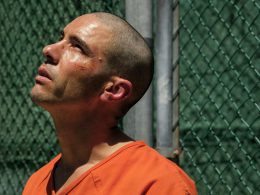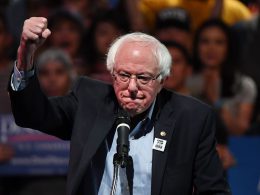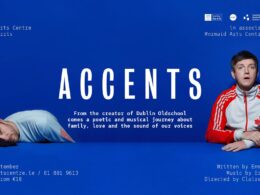Reviewed by James McCabe
It would be difficult to imagine an event that rocked the world and changed the course of history to the extent that the Russian Revolution did. No film could hope to capture the magnitude of such an upending of social relations. Plus, the quality of film footage from this period is generally poor by today’s standards. However, Tsar to Lenin is a documentary film that captures some of the dramatic events of these momentous years and in terms of quality, it stands the test of time.
The film’s introduction explains that the sequences were shot by more than 100 different cameras, over 13 years, from before the First World War, through the revolution and the Russian Civil War. The footage compiled by Herman Axelbank originated from a host of different sources. Some of the clips were taken by the Tsar’s royal photographers, the Tsar himself, Soviet photographers, and the military staff photographers of Germany, Britain, Japan and the United States.
The American radical, Max Eastman, who narrates the film, was a well-known writer and political activist at the time. His narration gives context to the images and he often adds wry humour when commenting on scenes.
In a scene where we see the Tsar skinny-dipping with his courtiers, Eastman comments, “This is the first time the world has seen a king as he really is”. In contrast to the “picturesque” lives of the royal family, we see soldiers’ dead bodies being dumped in fields as “there was no time to bury them.” After the Tsar declares himself Commander-in-Chief of the army, we see him visiting the front with priests to sprinkle holy water on soldiers “to make them fight better.”
Later we see soldiers at the front, jumping up and down; ecstatic at the news of the February revolution and rumours that it would bring an end to the war. We see crowds marching and celebrating in the streets of Petrograd and the release of political prisoners.
Of course, the abdication of the Tsar and the formation of a pro-capitalist government didn’t end to the war, and we are shown footage of Lenin and Trotsky addressing crowds in the streets. Eastman summarises their speeches, “Stop the war, confiscate the land. Russia belongs to the workers and peasants. All power to the soviets*!”.
There are clips of armed workers marching and soldiers congregating in the streets throughout 1917 and you get a sense that ordinary people were beginning to realise the power they have to change society. We see that the movement learned a valuable lesson when the film shows the attempt by General Kornilov to launch a military coup, financed by big business to overthrow the Provisional Government.
This unsuccessful attempt was the beginning of the counter-revolutionary White movement, whose aim was to crush the soviets and workers’ organisations. The Bolsheviks gained support amongst the population, reflected in them gaining a majority in the soviets. It became clear that the only options on offer were either a brutal capitalist military dictatorship or a system of workers’ councils to stop the war and organise the redistribution of wealth in society to improve the lives of the majority.
Footage shows this idea being put into practice with the insurrection in October. “The next day a message was broadcast to all warring governments, inviting them to discuss terms of peace.” We’re then shown footage of the shabbily dressed, Mikhail Kalinin, a “self-educated peasant” who became head of the new workers’ government, “symbolising the change that had occurred.
These events sparked revolutionary movements across the world over the next few years. We see clips of the massive anti-war demonstrations that erupted in Germany and the many dead bodies of protesters shot down by the German state.
The film shows the execution of numerous Red Army prisoners by the Whites during the Russian Civil War. One prisoner can be seen jovially taunting his executioners before he’s shot. Eastman memorably comments, “The Red soldier is still laughing!” seconds before he’s shot down.
Wherever the Whites gained victories, they immediately eliminated the social gains of the October Revolution. They took land from small farmers to give back to big landlords, suppressed the rights of women and queer people, destroyed workers’ organisations and democracy, and orchestrated vicious massacres of Jewish communities. These are some of the reasons why the Red Army – despite its incredibly limited resources – was able to defeat the Whites and expel the imperialist armies. Another reason was that millions of people had committed themselves to the struggle for socialist change.
Material hardship continued, as a result of years of war and economic blockades. Anti-Bolshevik author Leonard Shapiro gives a glimpse of the mood of many at this time based on his memories as a young boy in Petrograd in 1920: “Life was extremely hard. There was near starvation level… yet my recollection, no doubt influenced by the adults around me, is one of enthusiasm and excitement. Life was new, hopeful, it was moving forward to some great future.”
Eastman finishes his narration by articulating the outlook of the oppressed at this time, who saw their struggle as part of the fight for “a liberated humanity, living without war, without nationalism, without class exploitation; in friendliness, peace and justice throughout the Earth.”
_______
*A soviet is a workers’ council that follows a socialist ideology, particularly in the context of the Russian Revolution. Soviets were the main form of government in the Russian SFSR and the Makhnovshchina.
The first soviets were established during the 1905 Revolution in the late Russian Empire. In 1917, following the February Revolution, a state of dual power emerged between the Russian Provisional Government and the soviets. This ended later that year with the October Revolution, during which the Second Congress of Soviets proclaimed itself the supreme governing body of the country.
Because soviets gave the name to the later Soviet Union, they are frequently associated with the state’s establishment. However, the term may also refer to any workers’ council that is socialist, such as the Irish soviets.












